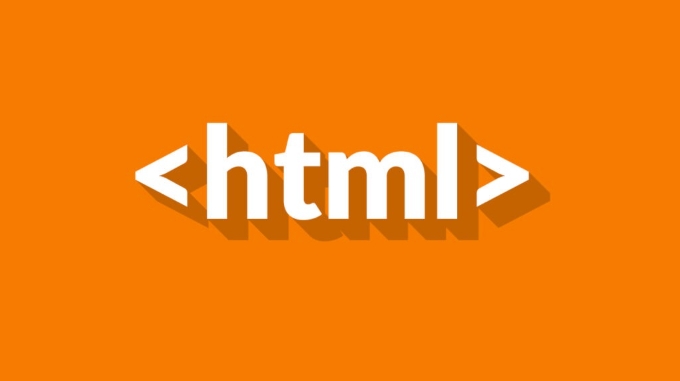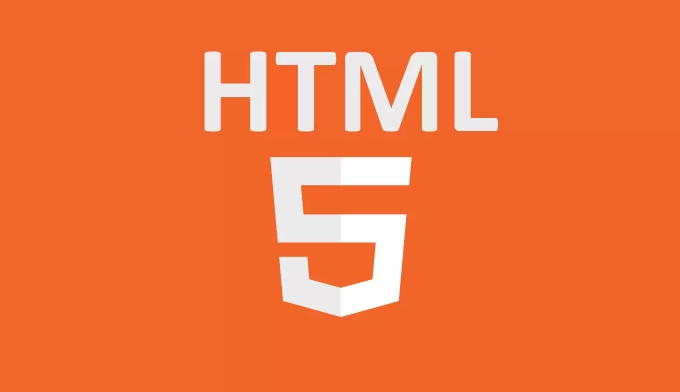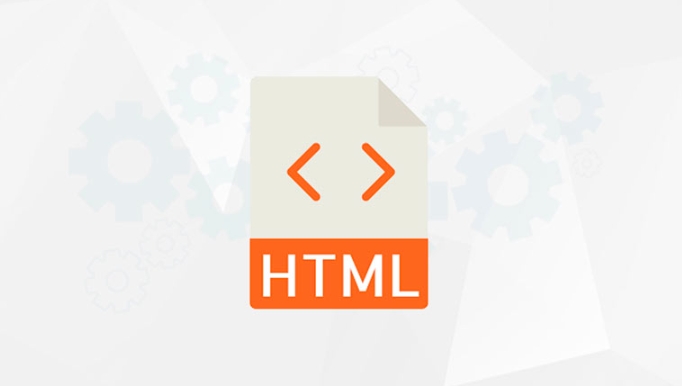 Web Front-end
Web Front-end
 HTML Tutorial
HTML Tutorial
 How to provide a fallback image for browsers that don't support a specific format in HTML
How to provide a fallback image for browsers that don't support a specific format in HTML
How to provide a fallback image for browsers that don't support a specific format in HTML
Aug 01, 2025 am 07:06 AMUse <picture> elements to combine multiple

If you want to display images in modern formats like WebP, AVIF, or JPEG XL but still support older browsers that don't recognize them, you can't rely on the img tag alone—because if a browser doesn't support the format, it just shows a broken image.

The solution is to use the <picture></picture> element with multiple <source></source> tags, letting the browser pick the first supported format.
Use the <picture></picture> element for format fallbacks
The <picture></picture> element acts as a container for multiple image sources. Browsers check each <source></source> in order and use the first one they support. If none are supported, they fall back to the <img src="/static/imghw/default1.png" data-src="https://img.php.cn/upload/article/000/000/000/175400316372209.jpeg" class="lazy" alt="How to provide a fallback image for browsers that don't support a specific format in HTML" > tag inside.

<picture> <source srcset="image.avif" type="image/avif"> <source srcset="image.webp" type="image/webp"> <img src="/static/imghw/default1.png" data-src="image.jpg" class="lazy" alt="Description of image"> </picture>
- The browser tries
image.aviffirst (if it supports AVIF). - If not, it tries
image.webp. - If neither works, it loads
image.jpgas a reliable fallback.
This method ensures all users see an image—even those on older browsers like Internet Explorer or early versions of Safari.
Why not just use img with a fallback?
You might think of doing something like this:

<img src="/static/imghw/default1.png" data-src="image.webp" class="lazy" oneerror="this.src='image.jpg'" alt="How to provide a fallback image for browsers that don't support a specific format in HTML" >
While this can work, it's not recommended because:
-
onerroronly triggers after the browser fails to load the image, causing a delay. - It relies on JavaScript—so it breaks if JS is disabled.
- It's less predictable and not as clean as using semantic HTML.
Using <picture> is the standard, accessible, and efficient way.
Best practices for fallback chains
When setting up your fallbacks, keep this order in mind:
- Put newest formats first (AVIF, then WebP).
- End with widely supported formats (JPEG, PNG).
- Always include an
<img src="/static/imghw/default1.png" data-src="photo-1x.jpg" class="lazy" alt="How to provide a fallback image for browsers that don't support a specific format in HTML" >tag with asrc—it's required and acts as the final fallback.
Example with high-res support:
<picture> <source srcset="photo.avif" type="image/avif"> <source srcset="photo.webp" type="image/webp"> <source srcset="photo-2x.jpg 2x, photo-1x.jpg 1x" type="image/jpeg"> <img src="/static/imghw/default1.png" data-src="photo-1x.jpg" class="lazy" alt="A beautiful landscape"> </picture>
You can also combine format fallbacks with responsive images using media queries in <source></source> if needed.
Basically, just remember:
Use <picture></picture> <source></source> <img alt="How to provide a fallback image for browsers that don't support a specific format in HTML" > → formats in order → solid fallback.
It's simple, reliable, and works across all modern and legacy browsers.
The above is the detailed content of How to provide a fallback image for browsers that don't support a specific format in HTML. For more information, please follow other related articles on the PHP Chinese website!

Hot AI Tools

Undress AI Tool
Undress images for free

Undresser.AI Undress
AI-powered app for creating realistic nude photos

AI Clothes Remover
Online AI tool for removing clothes from photos.

Clothoff.io
AI clothes remover

Video Face Swap
Swap faces in any video effortlessly with our completely free AI face swap tool!

Hot Article

Hot Tools

Notepad++7.3.1
Easy-to-use and free code editor

SublimeText3 Chinese version
Chinese version, very easy to use

Zend Studio 13.0.1
Powerful PHP integrated development environment

Dreamweaver CS6
Visual web development tools

SublimeText3 Mac version
God-level code editing software (SublimeText3)

Hot Topics
 Implementing Clickable Buttons Using the HTML button Element
Jul 07, 2025 am 02:31 AM
Implementing Clickable Buttons Using the HTML button Element
Jul 07, 2025 am 02:31 AM
To use HTML button elements to achieve clickable buttons, you must first master its basic usage and common precautions. 1. Create buttons with tags and define behaviors through type attributes (such as button, submit, reset), which is submitted by default; 2. Add interactive functions through JavaScript, which can be written inline or bind event listeners through ID to improve maintenance; 3. Use CSS to customize styles, including background color, border, rounded corners and hover/active status effects to enhance user experience; 4. Pay attention to common problems: make sure that the disabled attribute is not enabled, JS events are correctly bound, layout occlusion, and use the help of developer tools to troubleshoot exceptions. Master this
 Configuring Document Metadata Within the HTML head Element
Jul 09, 2025 am 02:30 AM
Configuring Document Metadata Within the HTML head Element
Jul 09, 2025 am 02:30 AM
Metadata in HTMLhead is crucial for SEO, social sharing, and browser behavior. 1. Set the page title and description, use and keep it concise and unique; 2. Add OpenGraph and Twitter card information to optimize social sharing effects, pay attention to the image size and use debugging tools to test; 3. Define the character set and viewport settings to ensure multi-language support is adapted to the mobile terminal; 4. Optional tags such as author copyright, robots control and canonical prevent duplicate content should also be configured reasonably.
 How to associate captions with images or media using the html figure and figcaption elements?
Jul 07, 2025 am 02:30 AM
How to associate captions with images or media using the html figure and figcaption elements?
Jul 07, 2025 am 02:30 AM
Using HTML sums allows for intuitive and semantic clarity to add caption text to images or media. 1. Used to wrap independent media content, such as pictures, videos or code blocks; 2. It is placed as its explanatory text, and can be located above or below the media; 3. They not only improve the clarity of the page structure, but also enhance accessibility and SEO effect; 4. When using it, you should pay attention to avoid abuse, and apply to content that needs to be emphasized and accompanied by description, rather than ordinary decorative pictures; 5. The alt attribute that cannot be ignored, which is different from figcaption; 6. The figcaption is flexible and can be placed at the top or bottom of the figure as needed. Using these two tags correctly helps to build semantic and easy to understand web content.
 What are the most commonly used global attributes in html?
Jul 10, 2025 am 10:58 AM
What are the most commonly used global attributes in html?
Jul 10, 2025 am 10:58 AM
class, id, style, data-, and title are the most commonly used global attributes in HTML. class is used to specify one or more class names to facilitate style setting and JavaScript operations; id provides unique identifiers for elements, suitable for anchor jumps and JavaScript control; style allows for inline styles to be added, suitable for temporary debugging but not recommended for large-scale use; data-properties are used to store custom data, which is convenient for front-end and back-end interaction; title is used to add mouseover prompts, but its style and behavior are limited by the browser. Reasonable selection of these attributes can improve development efficiency and user experience.
 Implementing Native Lazy Loading for Images in HTML
Jul 12, 2025 am 12:48 AM
Implementing Native Lazy Loading for Images in HTML
Jul 12, 2025 am 12:48 AM
Native lazy loading is a built-in browser function that enables lazy loading of pictures by adding loading="lazy" attribute to the tag. 1. It does not require JavaScript or third-party libraries, and is used directly in HTML; 2. It is suitable for pictures that are not displayed on the first screen below the page, picture gallery scrolling add-ons and large picture resources; 3. It is not suitable for pictures with first screen or display:none; 4. When using it, a suitable placeholder should be set to avoid layout jitter; 5. It should optimize responsive image loading in combination with srcset and sizes attributes; 6. Compatibility issues need to be considered. Some old browsers do not support it. They can be used through feature detection and combined with JavaScript solutions.
 What are the differences and use cases for html textarea and input type text?
Jul 12, 2025 am 02:48 AM
What are the differences and use cases for html textarea and input type text?
Jul 12, 2025 am 02:48 AM
The main difference is that textarea supports multiple lines of text input, while inputtext is only available in a single line. 1. Use inputtype="text" to be suitable for short and single-line user input, such as username, email address, etc., and can set maxlength to limit the number of characters. The browser provides automatic filling function, making it easier to uniformly style across browsers; 2. Use textarea for scenarios that require multiple lines of input, such as comment boxes, feedback forms, support line breaks and paragraphs, and can control the size through CSS or disable the adjustment function. Both support form features such as placeholders and required fills, but textarea defines the size through rows and cols, and input uses the size attribute.
 Creating Hyperlinks for Navigation with the HTML a Tag
Jul 11, 2025 am 03:03 AM
Creating Hyperlinks for Navigation with the HTML a Tag
Jul 11, 2025 am 03:03 AM
Using HTML tags, you can use the href attribute to realize page jump, open new windows, positioning within pages and email and phone link functions. 1. Basic usage: Specify the target address through href, such as accessing a web page; 2. Open a new window: add target="_blank" and rel="noopener" attributes; 3. Jump within the page: combine id and # symbol to achieve anchor point positioning; 4. Email phone link: use mailto: or tel: protocol to trigger system applications.
 Implementing Responsive Images with the HTML srcset and sizes Attributes
Jul 12, 2025 am 12:15 AM
Implementing Responsive Images with the HTML srcset and sizes Attributes
Jul 12, 2025 am 12:15 AM
srcset and sizes are key properties for HTML implementation of responsive images. srcset provides multiple image sources and their width or pixel density, such as 400w and 800w, and the browser selects the appropriate image accordingly; sizes defines the display width of the image under different screen widths, such as (max-width: 600px)100vw, 50vw, so that the browser can more accurately match the image size. In actual use, you need to prepare multi-size pictures, clearly named, design layout in accordance with media query, and test the performance of the equipment to avoid ignoring sizes or unit errors, thereby saving bandwidth and improving performance.





